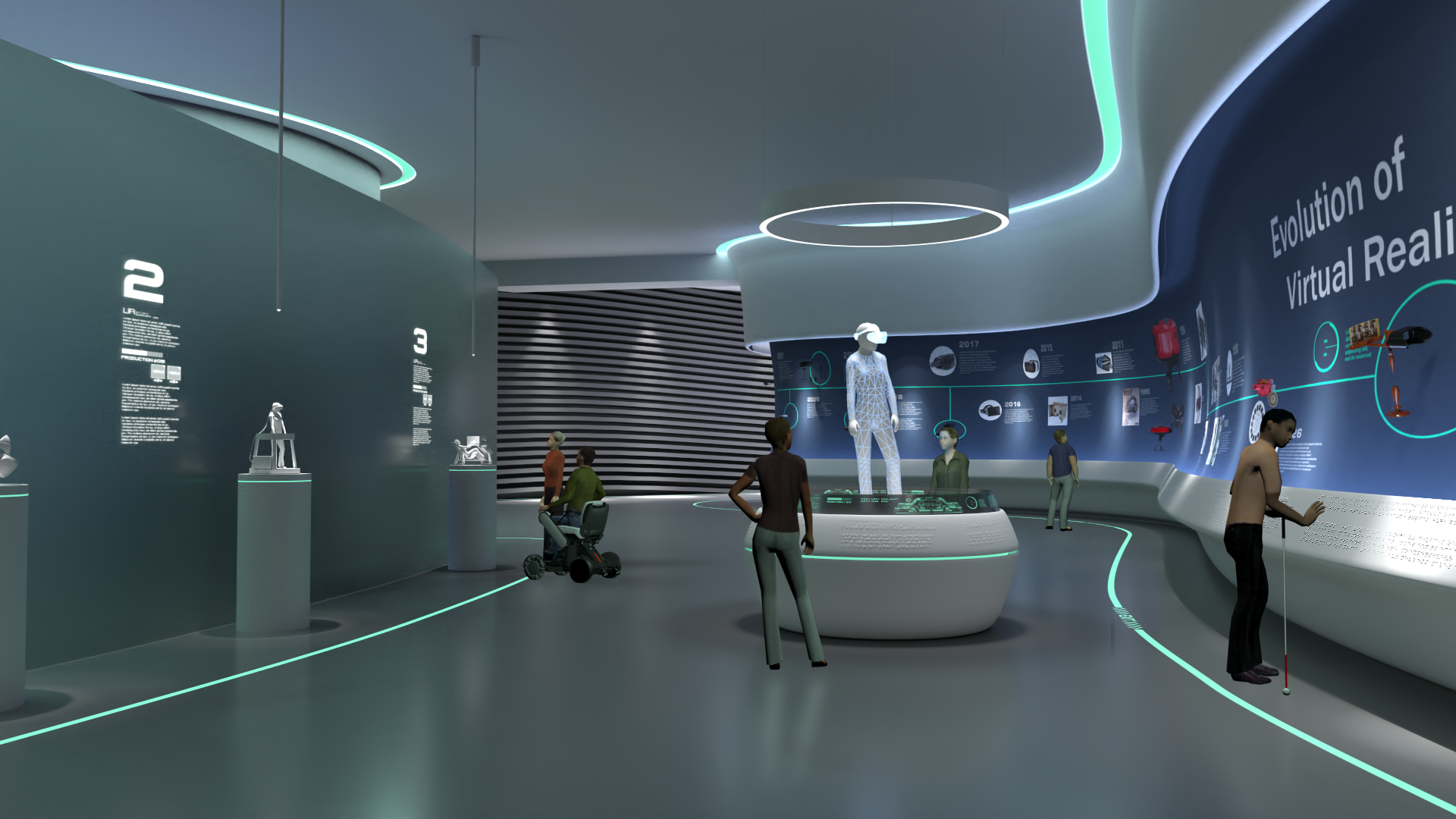
- Mechanisms for Sensing
Annotated Bibliography
COPY currently shown bibliography
Acarón Ledesma, H., Li, X., Carvalho-de-Souza, J.L. et al. An atlas of nano-enabled neural interfaces. Nat. Nanotechnol. 14, 645–657 (2019). https://doi.org/10.1038/s41565-019-0487-x
- A review of the BCI field focused on the materials and implementation designs. Intent is to develop an atlas of different nanotechnologies that can be used in biological interfaces.
Astler, D., Chau, H., Hsu, K., Hua, A., Kannan, A., Lei, L., ... & Tang, C. M. (2011, October). Increased accessibility to nonverbal communication through facial and expression recognition technologies for blind/visually impaired subjects. In The proceedings of the 13th international ACM SIGACCESS conference on Computers and accessibility (pp. 259-260). https://doi.org/10.1145/2049536.2049596
- Article discussing the algorithms and design concepts of a device that can capture and communicate non-verbal messages to a blind user.
Knoll, Alois. "Researchers transmit digital twin of road traffic situation into vehicles: Bird's-eye view improves safety of autonomous driving". Artificial Intelligence, Mobility. Technical University of Munich. Sept. 13, 2022.
- This paper demonstrates how multiple cameras can be combined to give a person a view they would not otherwise have
Poor, G. M., Leventhal, L. M., Kelley, S., Ringenberg, J., & Jaffee, S. D. (2011, October). Thought cubes: exploring the use of an inexpensive brain-computer interface on a mental rotation task. In The proceedings of the 13th international ACM SIGACCESS conference on Computers and accessibility (pp. 291-292).
https://doi.org/10.1145/2049536.2049612
- Study of the use of the Emotiv EPOC headset to relay information to a computer without the use of a mouse/keyboard or other physical interaction device.
Tan, P., Han, X., Zou, Y., Qu, X., Xue, J., Li, T., Wang, Y., Luo, R., Cui, X., Xi, Y., Wu, L., Xue, B., Luo, D., Fan, Y., Chen, X., Li, Z., Wang, Z. L., Self-Powered Gesture Recognition Wristband Enabled by Machine Learning for Full Keyboard and Multicommand Input. Adv. Mater.2022, 34, 2200793. https://doi.org/10.1002/adma.202200793
- This study created a gesture recognition wristband to serve as a lightweight alternative to existing VR control systems that are more physically cumbersome. They achieved 92.6% accuracy and found the technology to have great potential.
WennersHerron, A. (2022, October 7). Sensors can Tap into Mobile Vibrations to Eavesdrop Remotely. Psu.edu. Retrieved January 4, 2023, from https://www.psu.edu/news/engineering/story/sensors-can-tap-mobile-vibrations-eavesdrop-remotely-researchers-find/
- Using an off-the-shelf automotive radar sensor and a novel processing approach, Penn State researchers demonstrated they could detect the vibrations of a cell phone’s earpiece and decipher what the person on the other side of the call was saying with up to 83% accuracy, revealing a significant security concern.
Z. Lu, S. Cai, B. Chen, Z. Liu, L. Guo and L. Yao, "Wearable Real-Time Gesture Recognition Scheme Based on A-Mode Ultrasound," in IEEE Transactions on Neural Systems and Rehabilitation Engineering, vol. 30, pp. 2623-2629, 2022, doi: 10.1109/TNSRE.2022.3205026. Accessed at: https://ieeexplore.ieee.org/abstract/document/9881558
- This study tested a portable gesture recognition system using ultrasound with AI that can be used offline, finding it has a 96.92% accuracy rate, showing the technology has great potential for use in gesture-based interfaces in many contexts.
Yixuan Jia, Christoph A. Spiegel, Alexander Welle, Stefan Heißler, Elaheh Sedghamiz, Modan Liu, Wolfgang Wenzel, Maximilian Hackner, Joachim P. Spatz, Manuel Tsotsalas, Eva Blasco. Covalent Adaptable Microstructures via Combining Two-Photon Laser Printing and Alkoxyamine Chemistry: Toward Living 3D Microstructures Advanced Functional Materials ( IF 19.924 ) Pub Date: 2022-09-22 , DOI:10.1002/adfm.202207826. Available from: https://onlinelibrary.wiley.com/doi/10.1002/adfm.202207826
- This paper examines manufacturing programmable materials, whose mechanical properties can be adapted on demand, and can be applied in areas ranging from robotics, to biomedicine, or microfluidics.